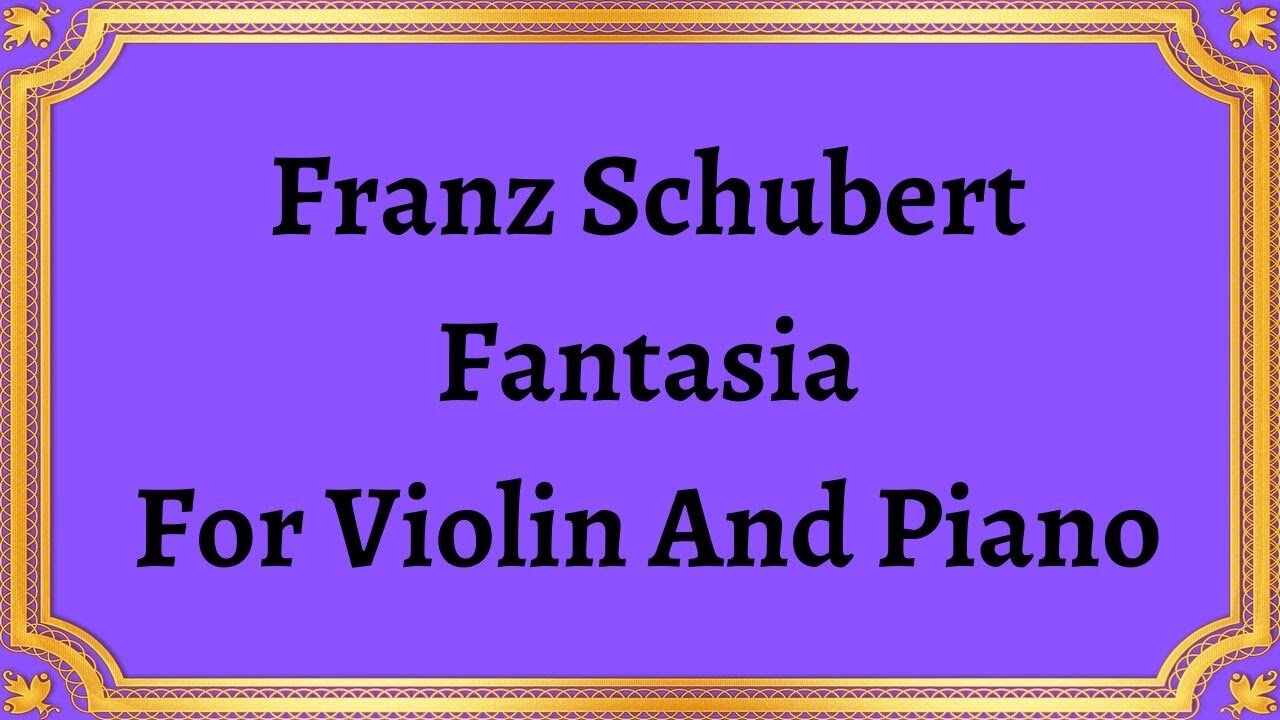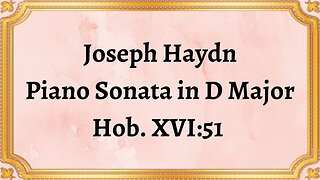Premium Only Content

Franz Schubert Fantasia For Violin And Piano
#FranzSchubert #FantasiaForViolinAndPiano #CMajor #D.934 #ChamberMusic #EmotionalDepth #TechnicalVirtuosity #HarmonicComplexity #Virtuosity #Arpeggios #JaschaHeifetz #ArthurRubinstein
Publication date 1950
Joseph Szigeti violin Joseph Levine Piano
The Franz Schubert Fantasia for Violin and Piano is one of the most beloved works in the classical music repertoire. Schubert composed the Fantasia in C Major, D. 934, in 1827, and it was first performed later that year in Vienna with violinist Josef Slavík and pianist Franz Schubert.
The Fantasia's structure is highly unusual for a chamber work of this period. Instead of the typical three or four movements, Schubert composed a single movement that is divided into four distinct sections, each with its own mood and character. The opening section begins with a lively, playful theme that is repeated several times before transitioning to a passionate and dramatic second section. The third section is a lyrical adagio, featuring some of Schubert’s most haunting melodies. Finally, the work concludes with a joyful and triumphal rondo that draws the work to a rousing conclusion.
One of the most striking features of the Fantasia is its harmonic complexity. Schubert uses rich, complex harmonies to create a sense of emotional depth throughout the work. The opening theme, for example, features a series of unexpected chord changes that keep the listener's attention engaged. Schubert also uses unexpected shifts in tonality to create a sense of tension and release throughout the work.
Another notable aspect of the Fantasia is its technical demands. The solo violin part requires a great deal of virtuosity, with difficult passages that require precision, agility, and speed. The piano part, too, is highly demanding, featuring complex arpeggios, runs, and trills.
Despite its technical difficulty, the Fantasia for Violin and Piano has become one of the most beloved pieces in the violin repertoire. Its unique structure, emotional depth, and technical virtuosity have captured the hearts of audiences and performers alike. The work has been performed and recorded by some of the greatest violinists and pianists of the last century, including Jascha Heifetz and Arthur Rubinstein.
In conclusion, the Franz Schubert Fantasia for Violin and Piano is a remarkable work of chamber music that embodies the best of Schubert's compositional style. Its unique structure, emotional depth, and technical virtuosity have made it one of the most beloved and enduring works in the violin and piano repertoire.
You have the opportunity to support the channel https://destream.net/live/RadSiarAl/donate
-
 6:07
6:07
Classical music_Music Inspiration
12 days agoJoseph Haydn Piano Sonata in D Major, Hob. XVI:51
501 -
 2:02:40
2:02:40
Steven Crowder
4 hours agoHow USAID Spread Fake News with Your Tax Dollars & Trump Took Down Title IX
314K190 -
 LIVE
LIVE
TheAlecLaceShow
1 hour agoGuests: Alex Marlow, Rep. Cloud & Rep. Gill | No Men In Women’s Sports | The Alec Lace Show
117 watching -
 52:02
52:02
PMG
16 hours agoHannah Faulkner and Pastor Mark Driscoll | WAKE UP CHURCH
389 -
 2:07:17
2:07:17
Matt Kohrs
12 hours agoMAX DEGEN TILT!!! (New Highs Incoming!) || The MK Show
45.9K2 -
 55:35
55:35
Grant Stinchfield
1 hour agoDemocrats Fight Against Trump is a Losing Battle as the Swamp Drains Itself
9.99K5 -
 LIVE
LIVE
The Shannon Joy Show
2 hours ago🔥HUGE Victory for Sanity - Trump Signs Executive Order Banning Trans Males From Women’s Sports! With Special Guest Alex Newman!🔥
630 watching -
 53:17
53:17
The Criminal Connection Podcast
9 hours agoKING OF CLUBS: Terry Turbo Story (PART 2) One Nation: The Early Days (90'S RAVE SCENE DOCUMENTARY)
6.88K1 -
 42:40
42:40
Rethinking the Dollar
2 hours agoTrump Ignores Cali Insurance Crisis Yet Has Big Plans For Gaza
20.5K20 -
 2:58:53
2:58:53
Wendy Bell Radio
8 hours agoDOGE Just Ended The Deep State
125K71